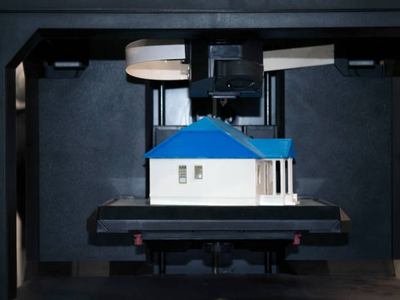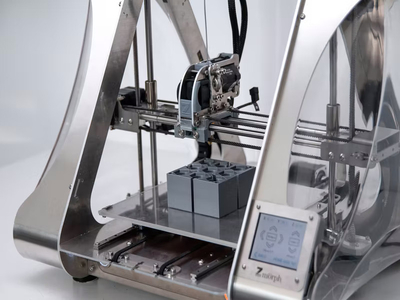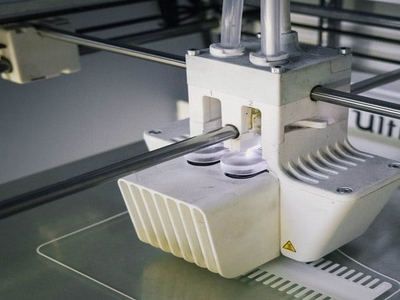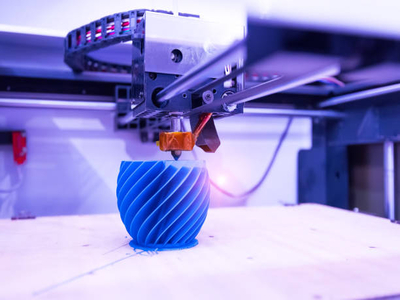3D printing, also known as additive manufacturing, has gained a lot of popularity in recent years in both the hobbyist and professional worlds.
While there are a number of advantages to using 3D printing, there are also several drawbacks that must be considered before making the decision to start 3D printing.
We’ll be discussing in-depth the disadvantages of 3D printing, and towards the end reiterating the advantages that 3D printing is so often praised for.
Disadvantages of 3D Printing

1. Limited Materials
3D printing has revolutionized many areas of manufacturing and design, but it also has a few limitations.
One disadvantage is that at the moment, only a few materials can be used for 3D printing.
This is due to the fact that printers are unable to regulate temperatures properly enough for some polymers and metals to be used in the manufacturing process.
Additionally, many of these materials are not environmentally friendly or recyclable, making them less sustainable and eco-friendly than other manufacturing processes.
Finally, several of these printable items are not suitable for food use or skin contact, limiting their application in a variety of situations.
Despite these restrictions, 3D printing is a highly flexible technology with significant potential for development and advancement.
2. Restrictive Minimum Size
One of the most significant drawbacks of 3D printing technology is that current 3D printers have tiny print chambers.
These tiny print chambers restrict the maximum size of 3D prints that can be produced in one piece.
Anything bigger would need to be produced in several parts and then connected after manufacture.
The problem is that when you work with larger components, it’s easier for mistakes to happen.
Larger prints might lead to higher costs and a slower production time since the printer will have to print many pieces.
Not to mention the manual labor that will be required to join the pieces together.
Depending on how large the piece is, it may be more cost-effective and faster to produce bigger parts using conventional manufacturing processes rather than attempting to 3D print them.
However, as 3D printing technology advances, this problem will almost certainly be resolved.
3. Post Processing

The biggest problems relate to post-processing or the process of preparing a 3D-printed component for use after it has been manufactured.
One of the most common post-processing methods is to remove support material from the structure and then sand or smooth the surface to obtain the desired outcome.
Depending on the part’s size, intended application, and type of 3D printing technology utilized, this post-processing might require any number of diverse processes.
These processes include specialized equipment, including water jetting, sanding, chemical baths, air or heat drying, and more.
These techniques have the potential to improve the quality and usability of 3D-printed components, but also impose an extra burden on manufacturers, ultimately raising costs.
As a result, while 3D printing has several advantages in certain situations, it must be used cautiously in order to get the most out of it.
4. Large Volumes
3D printing is more expensive than injection molding in terms of cost per piece and time to complete a project.
3D printing is not a zero-cost technology like some other methods, such as injection molding, where huge quantities may be produced more quickly.
The initial investment for 3D printing is less than that of other manufacturing technologies, but when scaled up for mass production, the cost per unit does not decrease as it would with injection molding.
5. Part Structure
Parts are constructed in layers with 3D printing.
While these layers do adhere, they may fracture under specific pressures or angles.
When creating things using fused deposition modeling (FDM), this problem is more serious, while poly jet and multijet components are also more brittle.
This is why injection molding is often preferable as it creates homogeneous parts that will not break apart or separate.
Read our related article where we test the Best FDM 3D Printer out there.
Benefits of 3D Printing

When compared to traditional manufacturing methods, this production process has a number of benefits.
1. Adaptable Design
3D printing enables the creation and printing of more sophisticated designs than conventional manufacturing processes.
Any design limitations that formerly applied to other manufacturing methods no longer apply to 3D printing.
Additionally, 3D printing has brought about a new era of manufacturing and promises to revolutionize manufacturing, allowing for the creation of more complex and diverse designs than ever before.
2. Fast Prototyping
One of the main advantages of 3D printing is that it can create components very quickly, allowing for faster prototyping.
Because layers can be built on top of one another, 3D printing allows for each step to finish more quickly.
In comparison to machining prototypes, 3D printing is less expensive and faster in creating prototypes because parts may be completed in hours.
This advancement in prototyping has been beneficial for numerous fields.
For example, in the medical field, 3D printing is being employed to fabricate prosthetics and implants.
The video below further illustrates how medical 3D printing can actually solve the shortage of organ donations!
In the aerospace business, 3D printing is utilized to make fuel nozzles and engine turbine blades.
3. On-Demand Printing

On-demand 3D printing allows you greater customization and financial savings and there is no need to maintain a large inventory as items are only produced when ordered.
This not only saves money but also frees up storage space.
Furthermore, because print-on-demand is frequently faster than traditional manufacturing, consumers may receive their goods more quickly.
As a result, print-on-demand is becoming increasingly popular among companies of all sizes.
5. Lightweight and Strong Components
3D printing has been around for a long time, but it has only recently begun to attract a broad audience.
One of the main causes behind this is the creation of more user-friendly and affordable 3D printers.
Another consideration is the increased availability of a wider range of materials that may be used in 3D printing.
Plastic is the most prevalent 3D printing material as it has several advantages over other substances such as metals.
Plastics are also more flexible and durable, which is beneficial in industries where weight is important, such as automotive and aerospace.
Because they are lighter, plastics can result in fuel savings as well as improved safety in certain situations.
Furthermore, metals are usually more pricey than plastics, allowing plastics to be more affordable for a wider range of people and enterprises.
3D printing with plastic has several benefits over metal alternatives.
Despite the fact that they are less strong, plastic is expected to retain its lead in the field of 3D printing for some time.
Articles You Might Want to Read!
- How to Get Printer Ink Off Hands (SIMPLE Ways to Try)
- BuildTak vs PEI: Which Build Plate Should Choose?
- How to Use a Heat Press Machine (EASY-Follow Guide)
- What is a Digital Transfer Printer? (What to Know)
- Best Shirts for Sublimation (Blends & Materials)